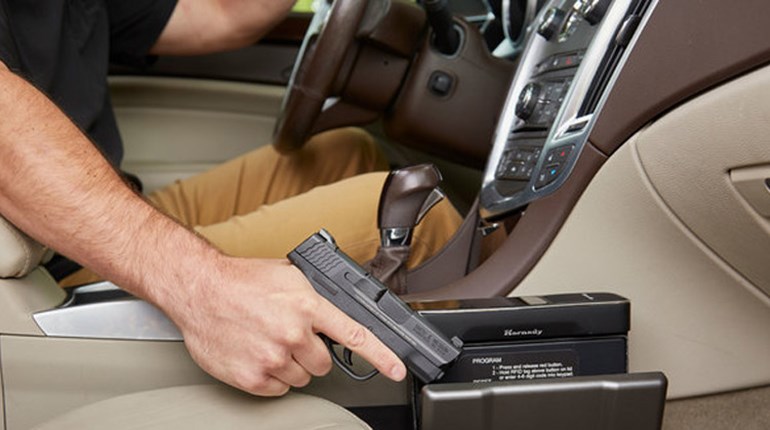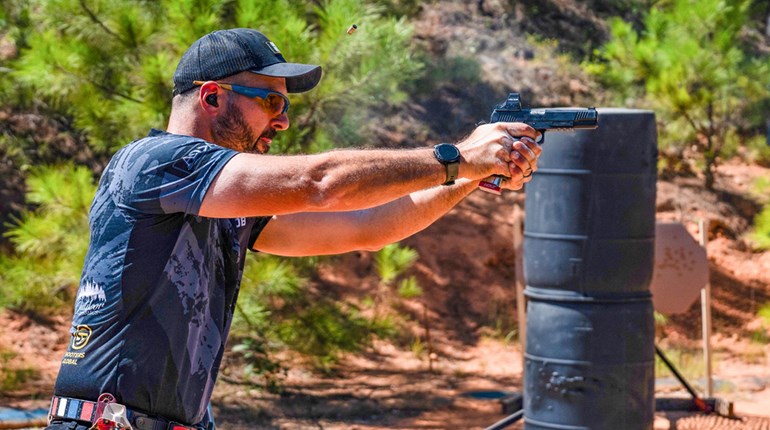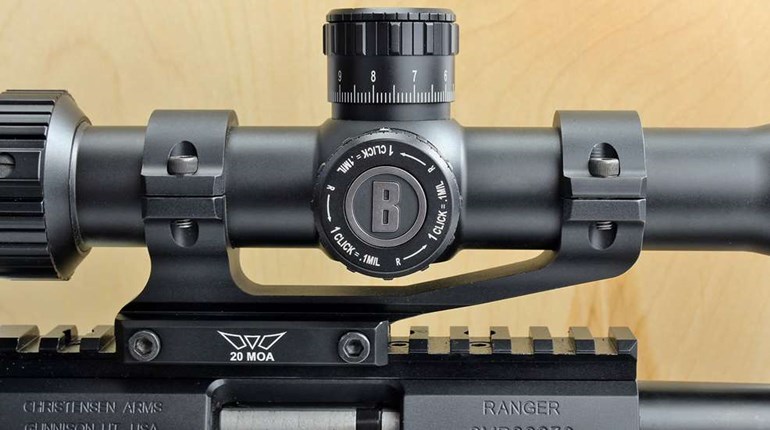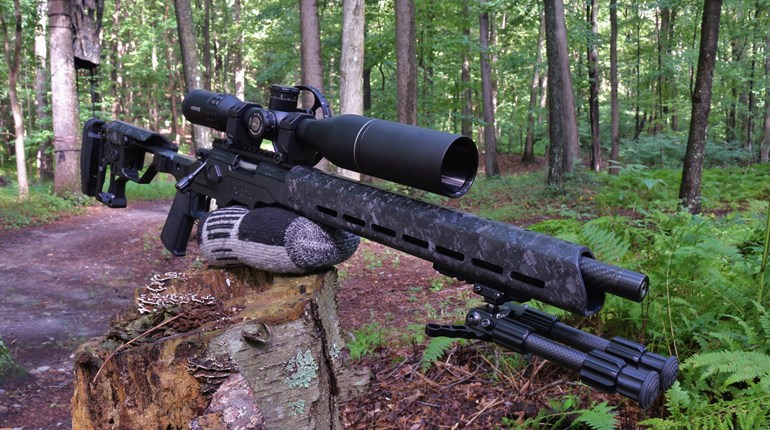
Gun magazines, shooting schools and the Interwebs are full of advice on how best to employ weapon-mounted lights and increasingly, night-vision equipment, too. These fonts of knowledge are not so sanguine when it comes to using a rifle’s organic sights in waning or waxing daylight. While modern technology makes it very easy to see into dark places with electro-optic assistance, learning to shoot in dusk/dawn or other dimly lit conditions with day sights is still a good tool to keep in your bag of tricks.
I am not saying you should ditch your gun light—quite the opposite. A weapon-mounted light is my number-one, tactical-rifle accessory. But, there are times when lighting up may be undesirable—like when someone else is trying to shoot back at you. Also, consider many locales prohibit the mounting (and in some cases carrying) of artificial-light sources while hunting managed game. Fortunately, when the sun is just over the horizon, day sights can often still be used effectively.
Hunters know to stay alert during the 30 or so minutes before sunrise and after sunset, watching for movement in the approaching or fading light. Infantry from our armed forces have been “standing to” in those same minutes for more than 260 years because of the human eye’s ability to function in partial light. But, beyond those times, our eyes do not adapt well enough to the dark to shoot safely. The exceptions are in high-night-illumination conditions where the sky is clear, humidity low, moon phase full or nearly full and stars shining brightly. Like dawn and dusk, these conditions may present opportunities to see sights and targets without any external help.
Iron Sights
Open sights are not always included on new rifles these days, but they can usually be added without too much trouble. When low light negates the use of an optical sight, “irons” may extend your shooting time just a bit if they are accessible. Open sights are not hampered by light-filtering lenses and often have wider fields of view than do tube-style optics. The trick is to use sights with a large enough rear notch or aperture to see your front sight post and the target beyond it in dim light.
Back when my rank did not accord me any issued night-vision gear (only squad leaders and above had them in those days), the only way my M16A1’s tiny, dual-rear-sight apertures were usable in low light was when a parachute flare was floating down through the sky, illuminating friend and foe alike. The “A2” series of rifles corrected this somewhat, providing one small aperture for normal shooting distances and one much larger aperture for close-range shooting. The large peep is also useful during the transition time between daylight and the dark of night.
Most dual-aperture, aftermarket and factory tactical-rifle sights today follow the large- and small-aperture pattern. I have step-drilled rear-peep apertures up to .2-inch diameter in cases where dual units only have small holes. Likewise, non-peep rear sights need wider notches to allow enough light to reach the eye for use in dim light. While narrow V- and U-shaped sights can be filed or machined wider, aiming accuracy will suffer in bright daylight, so I do not recommend that approach if these are used as your primary day sights.
Tritium is often incorporated into iron sights for low- and no-light use due to its constant glow. Unfortunately, these sights will be all you can see in pitch darkness, so the term “night sights” is misleading. However, in fading light, tritium sights contrast nicely with the things you see downrange. Tritium is radioactive, but deemed safe in its sealed state when installed in sights, so take care that they are not broken open. My experience has been that a quality set of tritium sights has a usable life of around 10 years, give or take.
Fiber-optic-sight inserts are popular for quick-acquisition use in bright daylight but they only work if a light source is shining on them, so low-light conditions render them no more useful than regular open sights. Luminous paint can be used to make low-light sights by applying it to one or both sights. Small bottles of this “rechargeable” paint are commercially available and inexpensive, but, obviously, this is limited in application. The glow will get you through dusk after being charged by sunlight all day, but come the dawn, the sights will need to be recharged by a light source prior to use.
Other Sight Systems
Red-dot and holographic sights are extremely popular but in dawn or dusk-like conditions the illuminated aiming points need to be turned down to their lowest-visible settings. Anything brighter will wash out the target image. If you have a choice of reticle colors, use red when possible. Our eyes adjust to darkness faster after seeing red light than they do after viewing other, common, illuminated-reticle colors.
Riflescopes are more difficult to use when light is in short supply. Lower powers and/or larger objectives allow more light to get through to your eye, resulting in brighter images. Do not hesitate to dial down to the lowest magnification just before sunrise and shortly after sunset. If your riflescope contains an illuminated reticle, the lowest rheostat setting may help to clarify the aiming point without washing out the target.
Lastly, visible lasers really work well in limited-light conditions—assuming you are not worried about being detected. So long as you can see your target, have a good zero and know where to hold for different distances, that red or green beam makes low-light shooting pretty simple. Just remember it points right back at you, too.
One of the four cardinal rules of gun safety is to know your target and what is beyond it. None of the techniques described above provides target illumination. For any of them to work, you still need enough ambient light to detect, identify, acquire and, if necessary, engage the target. Seeing your sights at night without seeing what you are aiming at well enough to positively identify it means it is too dark for day sights. Either switch on some artificial light or night-vision equipment to ID your target or call it a night. The extra sleep will make it easier to be back in place just before dawn anyway.




































